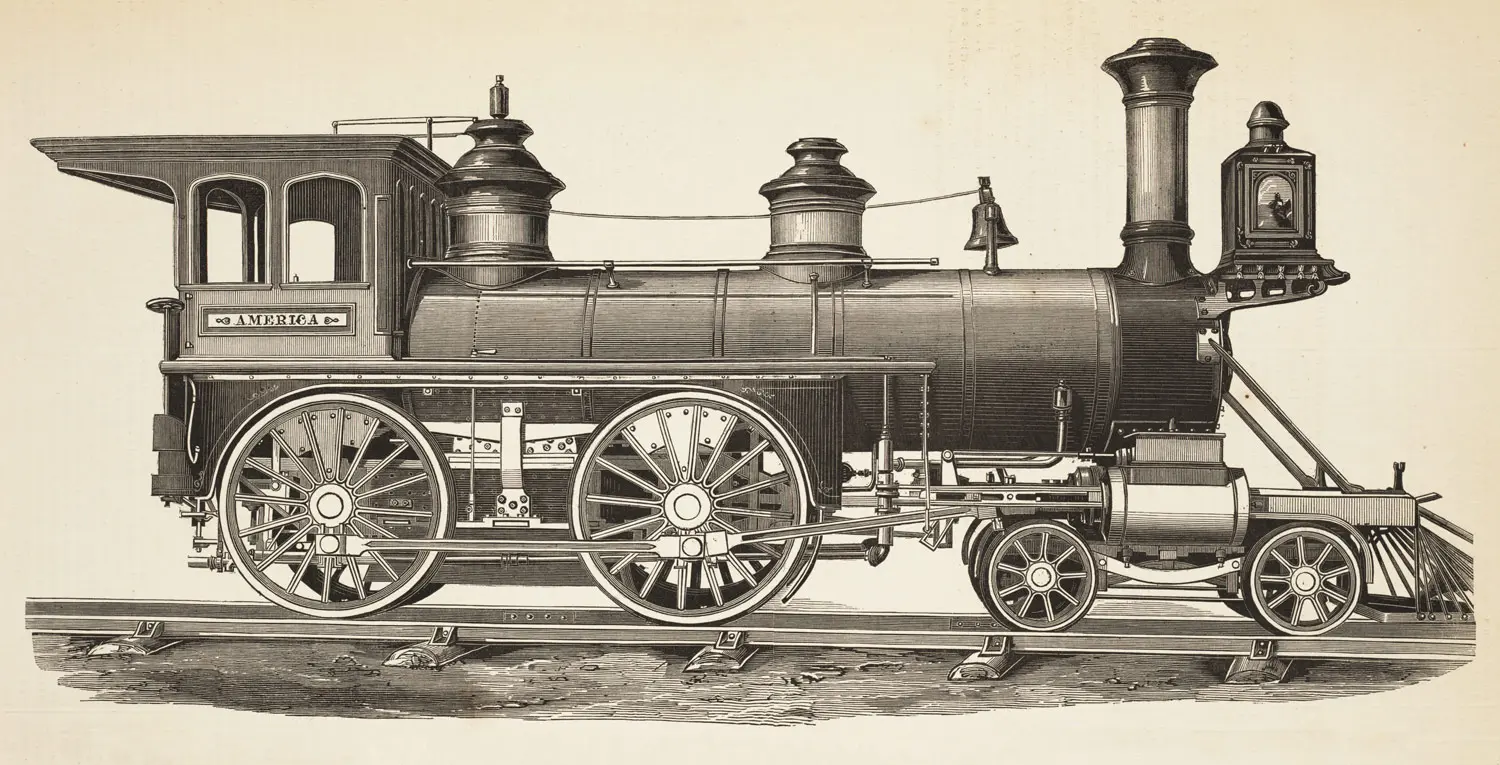How Did Steam Locomotives Lower the Cost of Transporting Raw Materials and Finished Goods?
- Unlimited Revisions
- Written to Standard
- Plagiarism Free
- On Time Delivery

Steam locomotives changed the way raw materials and finished goods were transported, making it faster, cheaper, and more efficient. Before their invention, people relied on slow and costly methods like horse-drawn carts and boats. Steam trains made long-distance transport easier, supporting trade and business growth.
Steam locomotives greatly increased the speed of transport, which helped lower costs. Before their use, moving goods over long distances took a lot of time and effort. Steam-powered trains reduced travel time, helping businesses save money and operate more smoothly.
Quick Delivery of Goods: Factories received raw materials faster, allowing them to produce goods more efficiently.
Lower Costs: Faster transport reduced storage expenses and handling costs for businesses.
Wider Market Reach: Companies could sell products in faraway places, increasing trade opportunities.
Less Spoilage and Damage: Perishable goods and fragile items were transported safely due to the steady speed of steam trains.
Increased Productivity: Faster deliveries allowed industries to manufacture and sell more products in less time.
Steam locomotives could carry much larger loads than earlier transport methods. This helped businesses move goods in bulk, reducing costs and improving supply chains.
Bulk Transport: Trains could carry large amounts of coal, timber, and other raw materials in one trip.
Cost Savings for Businesses: Moving large quantities of goods reduced transportation costs per unit.
Reliable Supply Chains: Companies had a steady supply of raw materials, helping them maintain production.
Lower Freight Charges: Since trains could move more goods at once, shipping costs were reduced.
Fewer Delays: Rail transport was more predictable than older methods, reducing disruptions in trade.
Before steam locomotives, transporting goods required many workers to handle carts and boats. Steam trains reduced the need for manual labor, making transport cheaper.
Fewer Workers Needed: Trains needed fewer people to operate compared to older transport methods.
Efficient Use of Workforce: Workers could focus on production and trade instead of transport.
Lower Wages for Transport Work: Businesses could spend less on transportation labor, increasing profits.
Reduced Dependence on Animals: Steam power eliminated the need for horses and oxen, saving costs on feeding and maintenance.
Steam locomotives helped create organized and efficient transport systems, reducing costs further. Businesses could move goods to distribution centers instead of delivering them one by one.
Lower Direct Shipping Costs: Using train networks cut down on individual delivery expenses.
Better Inventory Management: Companies could store goods in warehouses and distribute them as needed.
Smoother Trade Routes: Railways connected cities and industrial centers, improving the movement of goods.
Support for Business Growth: Improved transport helped cities grow and provided better infrastructure for trade.
Expanded Rural Trade: Railways connected remote areas to large markets, increasing economic opportunities.
Lower transportation costs helped industries expand and increased economic activity. Businesses could produce more, trade more, and create new job opportunities.
Growth of Factories and Businesses: Industries like textiles, mining, and manufacturing thrived due to cheaper transport.
Stronger Global Trade: Steam locomotives made it easier to transport goods across borders, boosting international trade.
More Jobs and Economic Development: More production and trade created job opportunities in different sectors.
More Affordable Goods: Lower transport costs reduced product prices, making them accessible to more people.
Innovation in Manufacturing: Industries developed better techniques for mass production, leading to economic growth.
Steam locomotives relied on coal, which had environmental effects. At the time, these issues were not well understood, but they included:
Air Pollution: Burning coal released smoke and harmful gases.
Deforestation: Large areas of land were cleared to build railway tracks.
Carbon Emissions: Steam engines contributed to pollution and climate changes over time.
Water Pollution: Waste from coal-burning engines sometimes polluted nearby rivers and lakes.
Steam locomotives provided major improvements compared to earlier transport methods:
Faster than Horse-Drawn Carts: Trains could transport goods much more quickly and reliably.
Higher Capacity than Boats: Unlike river transport, railways provided wider access and greater cargo space.
Lower Long-Term Costs: Despite high initial costs for building railways, the long-term savings were significant.
More Reliable than Road Transport: Unlike dirt roads that could be damaged by bad weather, railways provided consistent transportation.
Steam locomotives revolutionized the way raw materials and finished goods were transported. They made transport faster, cheaper, and more efficient, helping industries and economies grow. While they had some environmental effects, their impact on trade, business, and industrial development was huge. Their influence can still be seen in modern transportation systems today.
Steam locomotives reduced transportation costs by:
WhatsApp us